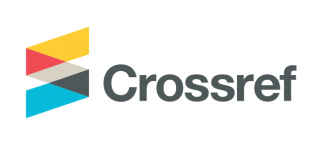SPATIAL COMPOSITION OF BENTHIC SUBSTRATE AROUND BONTOSUA ISLAND
DOI:
https://doi.org/10.20956/jiks.v4i1.3801Keywords:
benthic substrate, spatial composition, spatial ratio index, small islands, seagrassAbstract
Coral reefs and seagrass are natural fortress for small islands from waves and ocean currents. The spatial distribution of these benthic substrate should be known and monitored regularly. This study aims were to map existing benthic substrates on the reef flat of Bontosua Island, determine the spatial composition and develop index ratio. Benthic substrates were surveyed using geotagging technique. Their distribution were estimate using Quickbird image that was rectified and classified using ISOcluster method and validate by 240 selected photos. The seagrass were surveyed at 8 stasions to record percent cover and species composition. Depth profiles were track along 10 reef flat line segment. Bontosua Island has an elongated shape from South to Northwest. This study had produced a benthic substrate distribution map with thematic accuracy 76%. Total area able to map were 54.2 hectares. About 43% benthic substrates at Bontosua were mixture of coral rubble, seagrass and algae, 20% was mixture of rubble and algae, 16% dominated by seagrass, 13% mixture of sand and seagrass and 8% substrate were dominated by live coral. There were eight seagrass species found with average percent cover 37.2 ± 12.5 percent. The spatial ratio of live coral, seagrass and mixed substrate for West side reef flat was 2:20:49 and 1:9:9 for East side. This indicate that the distribution of benthic substrates on the West side is much wider than on the East side. This approach potentially applied to study the relationship between benthic substrate composition and the deformation of small islands.
References
Barbier, E. B., Koch, E. W., Silliman, B. R., Hacker, S. D., Wolanski, E., Primavera, J., …Reed, D. J. 2008. Coastal ecosystem-based management with nonlinear ecological functions and values - supporting material. Science (New York, N.Y.), 319(5861), 321–3. http://doi.org/10.1126/science.1150349.
Congalton, R. G., & Green, K. 2009. Assessing the Accuracy of Remotely Sensed Data: Principles and Practices. The Photogrammetric Record (Vol. 2). http://doi.org/10.1111/j.1477-9730.2010.00574_2.x
Ferrari, R., McKinnon, D., He, H., Smith, R., Corke, P., González-Rivero, M., Upcroft, B. 2016. Quantifying Multiscale Habitat Structural Complexity: A Cost-Effective Framework for Underwater 3D Modelling. Remote Sensing, 8(2), 113.
Ferrario, F., Michael, W.B., Curt, D. S., Fiorenza, M., Christine, C. S. dan Laura, A. 2014. The effectiveness of coral reefs for coastal hazard risk reduction and adaptation. Nature Communication, hal 1-9.
Fuad, M. A. Z. 2010. Coral Reef Rugosity and Coral Biodiversity. Bunaken National Park-North Sulawesi, Indonesia. Tourism, 60.
Goreau, T. F. 1959. The Ecology of Jamaican Coral Reefs I. Species Composition and Zonation. Ecology, 40(1), 67–90. http://doi.org/10.2307/1929924
McKenzie, L.J. 2003. Guidelines for the rapid assessment and mapping of tropical seagrass habitats. QFS, NFS, Cairns. 46 hal.
Rahmawati, S., Irawan, A., Supriyadi, I.H., Azkab, M.H. 2014. Panduan Monitoring Padang Lamun, ed. M. Hutomo, A. Nontji. COREMAP CTI LIPI, Jakarta, pp 45.
Rauf, A., & Yusuf, M. 2004. Studi Distribusi dan Kondisi Terumbu Karang dengan Menggunakan Teknologi Penginderaan Jauh di Kepulauan Spermonde , Sulawesi Selatan. Ilmu Kelautan, 9(2), 74–81.
Roelfsema, C., Phinn, S., Jupiter, S., Comley, J., & Albert, S. 2013. Mapping coral reefs at reef to reef-system scales, 10s-1000s km2, using object-based image analysis. International Journal of Remote Sensing, 34(18), 6367–6388. http://doi.org/10.1080/01431161.2013.800660.
Sawall, Y., Jompa, J., Litaay, M., Maddusila, A., & Richter, C. 2013. Coral recruitment and potential recovery of eutrophied and blast fishing impacted reefs in Spermonde Archipelago, Indonesia. Marine Pollution Bulletin, 74(1), 374–382.
Selamat, M. B., Jaya, I., Siregar, V. P., & Hestirianoto, T. 2012. Akurasi Tematik Peta Substrat Dasar dari Citra Quickbird (Studi Kasus Gusung Karang Lebar, Kepulauan Seribu, Jakarta). Ilmu Kelautan, 17(3), 132–140.
Spalding, M. D., Ruffo, S., Lacambra, C., Meliane, I., Hale, L. Z., Shepard, C. C., & Beck, M. W. 2014. The role of ecosystems in coastal protection: Adapting to climate change and coastal hazards. Ocean and Coastal Management, 90, 50–57. http://doi.org/10.1016/j.ocecoaman.2013.09.007.
Stehman, S. V. 2009. Sampling designs for accuracy assessment of land cover. International Journal of Remote Sensing, 30(20), 5243–5272. http://doi.org/10.1080/01431160903131000.
Stoddart, D. R. 1969. Ecology and Morphology Of Recent Coral Reefs. Biological Reviews, 44(4), 433–498. http://doi.org/10.1111/j.1469-185X.1969.tb00609.x.
Stoddart, D.R. 1978. Descriptive reef terminology in Monographs on oceanographic methodology, 5. Coral reefs: research methods, ed. D. R. Stoddart & R. E. Johannes.UNESCO, Norwich, 17-22.
Yasir Haya, L. O. M., & Fujii, M. 2017. Mapping the change of coral reefs using remote sensing and in situ measurements: a case study in Pangkajene and Kepulauan Regency, Spermonde Archipelago, Indonesia. Journal of Oceanography, 73(5), 623–645. http://doi.org/10.1007/s10872-017-0422-4.
Downloads
Published
Issue
Section
License
Copyright (c) 2018 Jurnal Ilmu Kelautan SPERMONDE

This work is licensed under a Creative Commons Attribution-NonCommercial 4.0 International License.

This work is licensed under a Creative Commons Attribution 4.0 International License



 sdsd
sdsd








